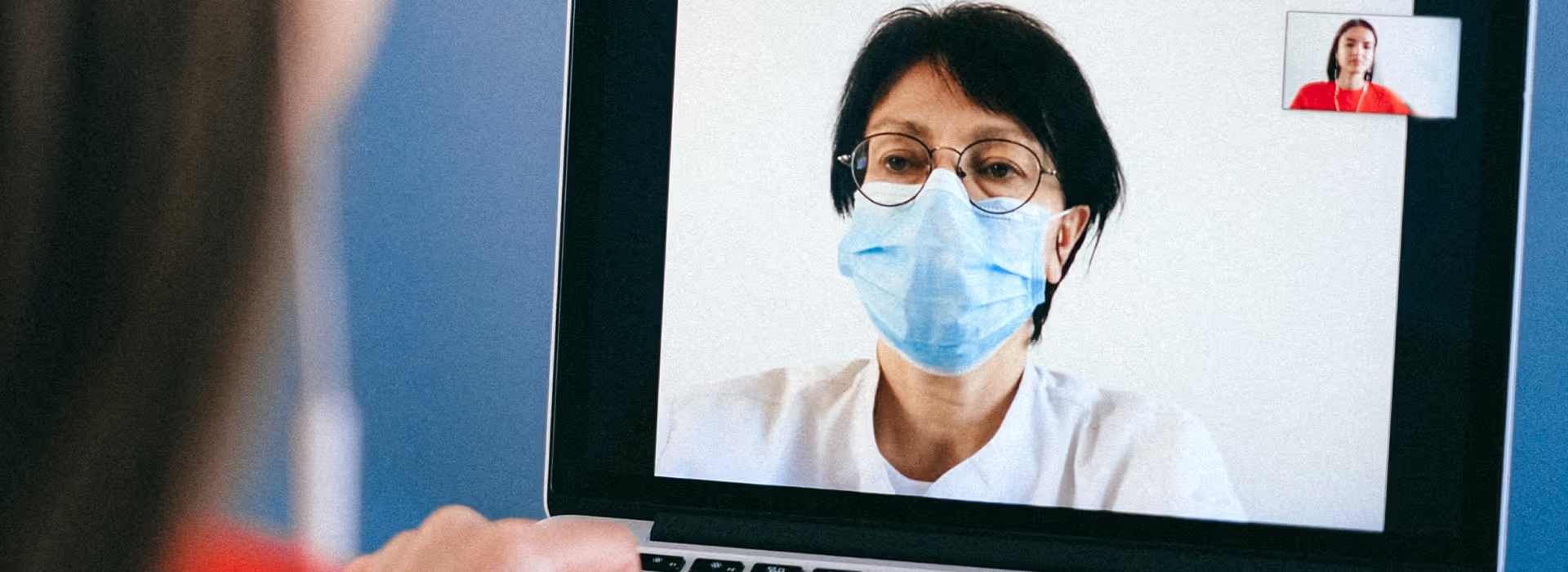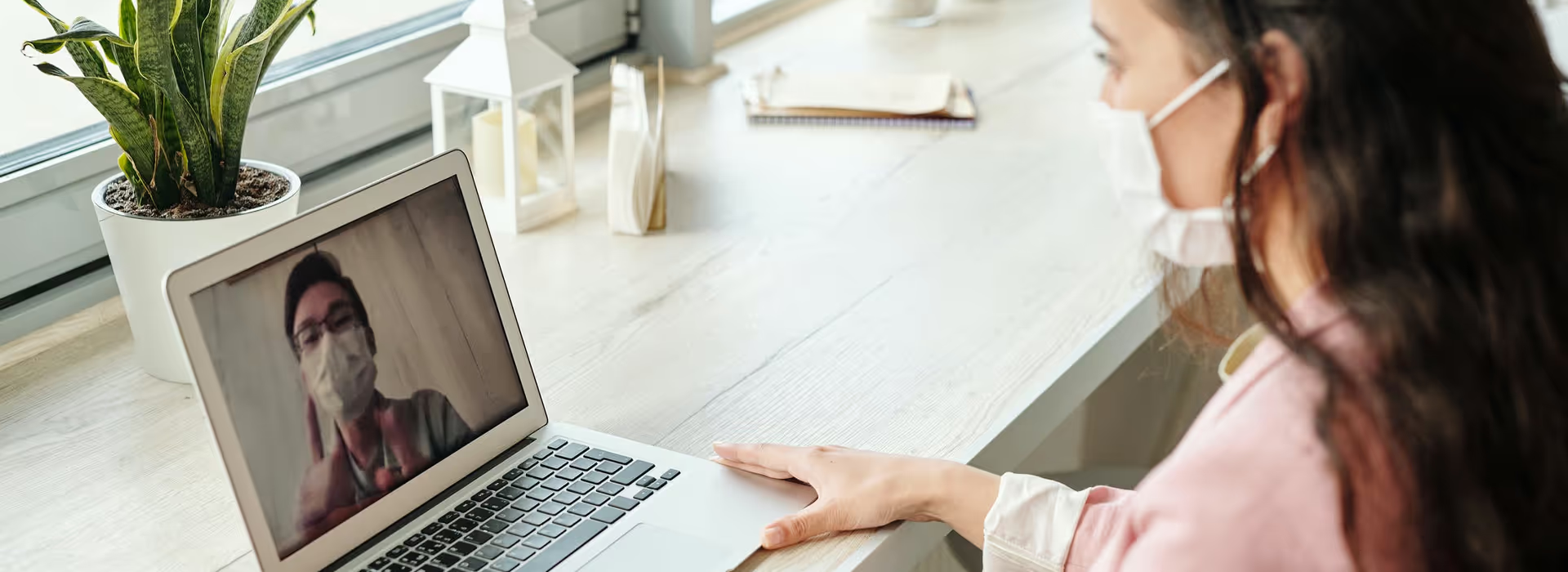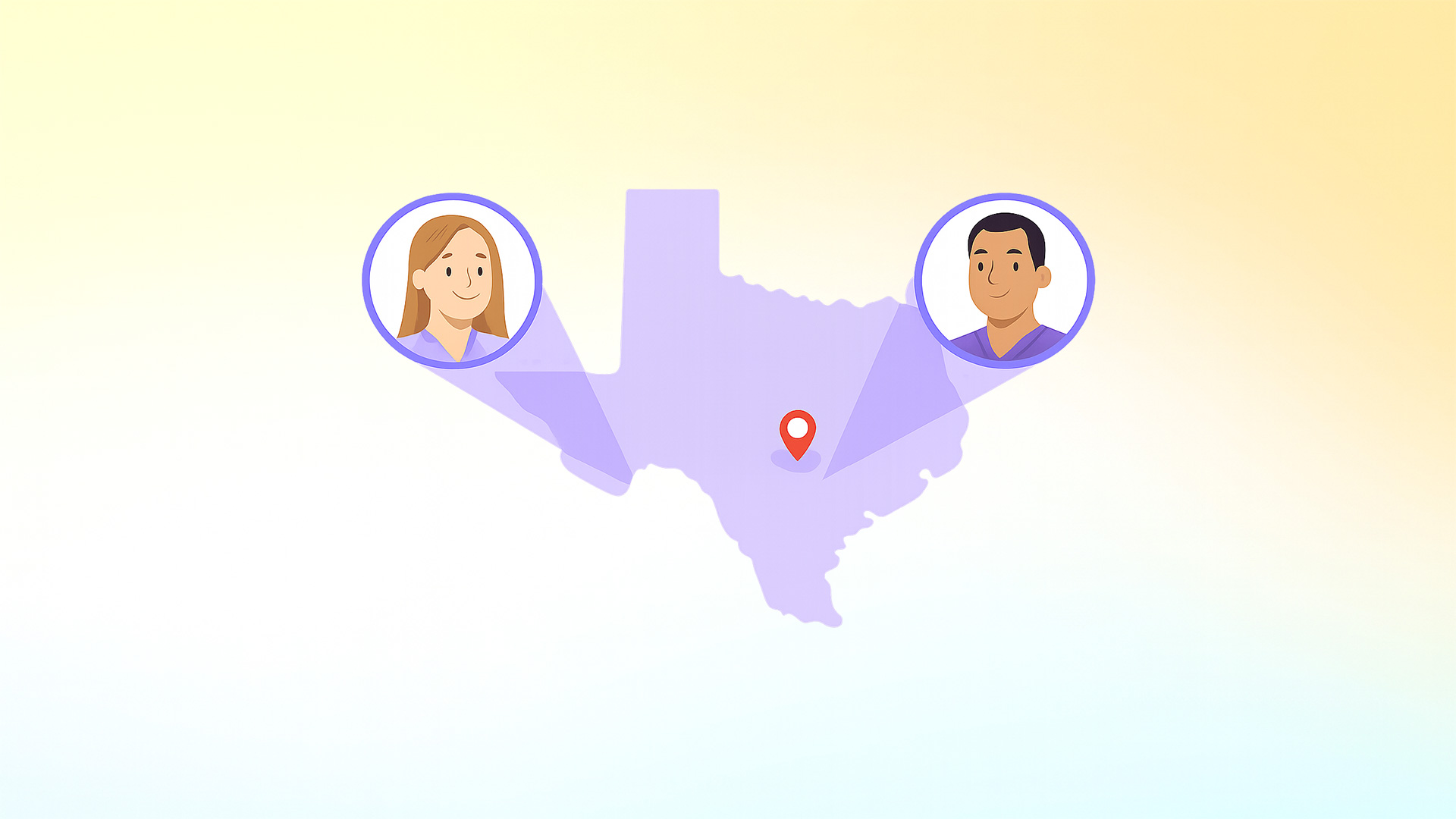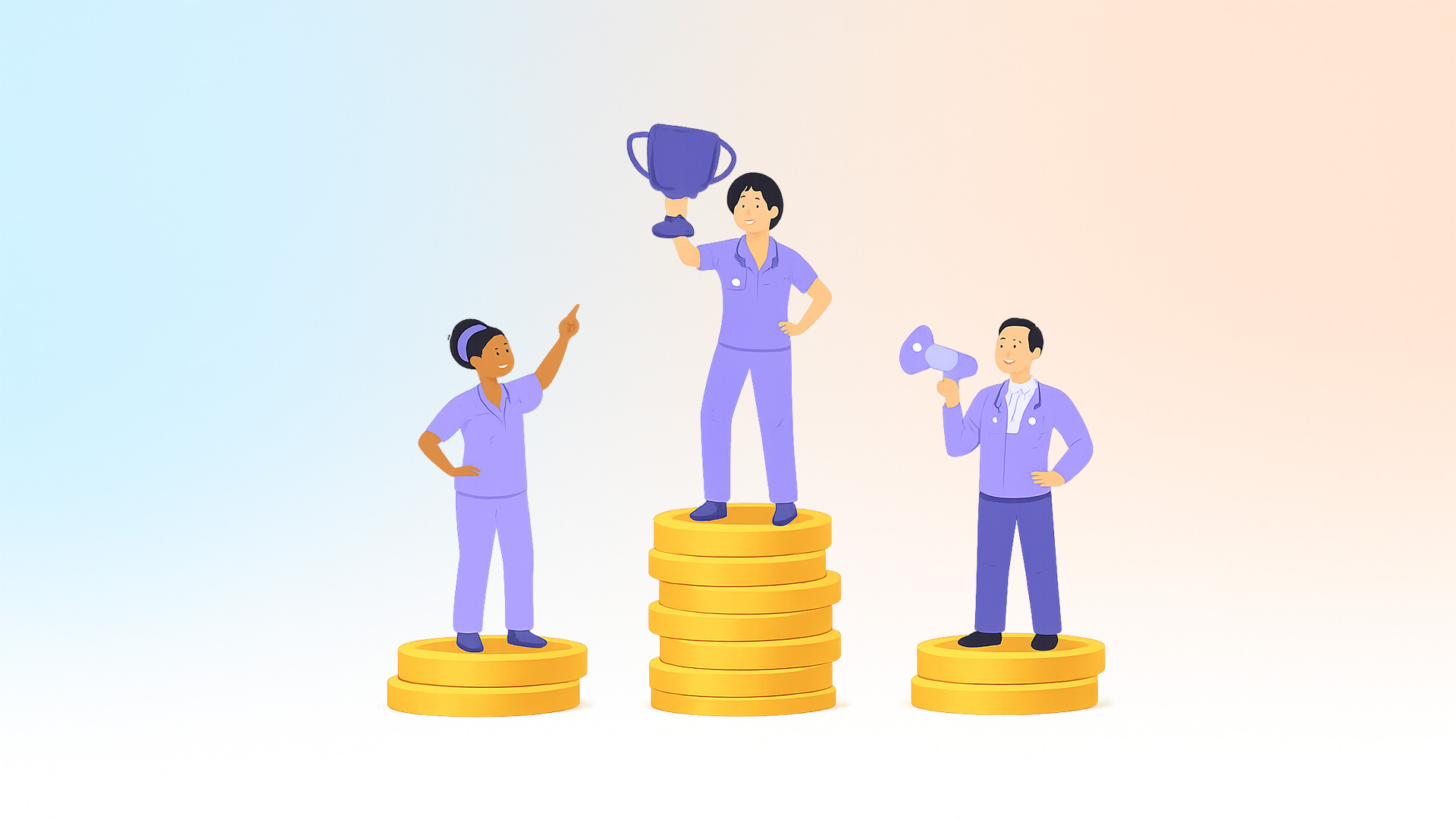Did you know the term telehealth has been around longer than most of us have been on Instagram? While the COVID-19 pandemic may have skyrocketed its popularity, the practice itself is far from new.
Now telehealth is no longer just a buzzword—it’s a cornerstone of modern healthcare. For Nurse Practitioner (NP) students, understanding telehealth isn’t optional; it’s essential.
Balancing clinical hours and learning the ropes of telehealth is the ultimate multitasking challenge for today’s NP students. With patient expectations evolving, healthcare delivery shifting, and technology advancing, telehealth has solidified its place as a game-changer in the industry.
Family nurse practitioners, in particular, are well-suited for telehealth due to their comprehensive training and ability to provide holistic, patient-centered care. But what exactly is telehealth? How does it work, and why should you care?
If you haven’t dipped your toes into telehealth yet, you’re in the perfect position to embrace it. From virtual consultations to remote patient monitoring, telehealth isn’t just part of the future—it is the future.
Gaining hands-on experience in a traditional clinical setting is still critical, but leveraging telehealth will make you a more versatile and in-demand NP. Continuing education opportunities focused on telehealth are increasingly being incorporated into graduate nurse practitioner programs, ensuring that NPs are well-prepared for the evolving healthcare landscape.
So, let’s unpack the essentials of telehealth, explore its potential, and answer your most pressing questions. Whether you’re an NP student trying to keep up with the latest trends or simply curious about how to prepare for the tech-driven healthcare landscape, this guide has you covered.
What is a Telehealth Nurse Practitioner?
Definition and Scope of Practice
A Telehealth Nurse Practitioner (NP) is a licensed healthcare professional who provides patient care remotely through digital communication channels, such as video conferencing, phone calls, and messaging platforms.
These NPs work in various healthcare settings, including hospitals, clinics, and private practices, and may specialize in specific areas like primary care, mental health, or urgent care. Their scope of practice includes conducting patient consults, diagnosing and treating illnesses, prescribing medications, and providing education and counseling to patients.
As a telehealth nurse, you’ll be at the forefront of modern healthcare, leveraging technology to deliver high-quality care to patients wherever they are.
Role in the Healthcare System
Telehealth NPs play a vital role in the healthcare system by increasing access to care, improving patient outcomes, and reducing healthcare costs. They work collaboratively with other healthcare professionals to provide comprehensive care to patients, ensuring that all aspects of a patient’s health are addressed.
Additionally, telehealth NPs often participate in continuing education and professional development to stay up-to-date with the latest medical research and technologies.
This commitment to lifelong learning ensures that they can provide the best possible care to their patients, adapting to new advancements and methodologies in the field.
Benefits of Telehealth Nursing
Telehealth nursing offers numerous benefits, including increased flexibility and convenience for patients, improved work-life balance for NPs, and enhanced patient engagement and satisfaction. As a telehealth NP, you can reach more patients, particularly those in rural or underserved areas, providing timely and cost-effective care.
This not only helps to bridge the gap in healthcare access but also allows you to manage your schedule more effectively, leading to a more balanced professional and personal life. The ability to provide care remotely also means that patients can receive the help they need without the barriers of travel or time constraints, making healthcare more accessible and efficient.
Are telehealth and telemedicine the same thing?
The short answer: not exactly, but don’t lose sleep over it. Many people, including some experts, use telehealth and telemedicine interchangeably. Even Wikipedia says the two terms are often considered the same thing. But for those of us in the healthcare field, there are some nuances worth noting.
According to the Health Resources and Services Administration (HRSA), telemedicine focuses specifically on remote clinical services, like diagnosing and treating patients via technology. Telehealth, on the other hand, has a broader reach. It encompasses telemedicine but also includes preventative care, education, and other non-clinical aspects of healthcare delivery.
For you, as a Nurse Practitioner (NP), telehealth is the term you’ll likely hear (and use) more often. Why? Because your role goes beyond diagnoses and treatments. You’re providing comprehensive, patient-centered care, which often includes preventative measures, health education, and wellness coaching—all of which fall under telehealth.
If you’re still unsure about which term to use, here’s the deal: telehealth is more popular, widely recognized, and inclusive of everything you’re likely to do as an NP. It’s also the go-to term in research, industry updates, and everyday conversations. So, when in doubt, stick with telehealth.
Telehealth options provide a comprehensive virtual health system that includes clinical services, electronic medical records, online booking, billing options, and educational materials, making it a broader and more inclusive term than telemedicine.
Many telehealth sites now offer virtual clinics and telemedicine options specifically designed for managing ADHD, adapting on-site practices to provide remote care.
And if you accidentally call it telemedicine, don’t sweat it—most people won’t even notice. Just keep providing exceptional care, whether it’s on a screen or in person!

How does virtual healthcare work?
You’ll need a solid internet connection—think reliable Wi-Fi, not the coffee shop kind that cuts out mid-sentence. Virtual healthcare relies on technology to deliver comprehensive care, with telehealth appointments typically happening through secure, online platforms where you’ll see and interact with your patients in real time.
While platforms like Zoom and Skype are commonly mentioned (and might already be on your laptop), healthcare providers often use specialized platforms designed specifically for telehealth. These platforms prioritize patient privacy, secure data handling, and easy access to medical tools, ensuring compliance with HIPAA and other healthcare regulations.
The good news? Many NP programs now include training on telehealth platforms and technologies, so you won’t be thrown into the deep end without some preparation.
By the time you graduate, you’ll likely have experience using these tools to conduct virtual appointments, document patient encounters, and manage follow-ups. For NPs interested in exploring diverse specialty areas and flexible job options, these skills open up numerous opportunities, including side gigs and telemedicine roles.
Curious about which platforms are worth exploring? Stick around until the end of this article, where we’ll share a list of commonly used telehealth tools and tips for choosing the right one for your practice. But for now, remember: a strong internet connection, a quiet space, and a user-friendly platform are your keys to telehealth success!
Telemedicine Nurse Practitioner Jobs
Types of Telemedicine Jobs for NPs
Telemedicine jobs for NPs are diverse and can be found in various healthcare settings. Some common types of telemedicine jobs for NPs include:
- Primary care telemedicine: Providing routine check-ups, diagnosing and treating common illnesses, and managing chronic conditions. This role is essential for maintaining ongoing patient health and preventing more serious health issues.
- Mental health telemedicine: Offering counseling, therapy, and medication management for patients with mental health conditions. This is a growing field, especially important in providing accessible mental health care to those who might not otherwise seek help.
- Urgent care telemedicine: Delivering immediate care for acute illnesses and injuries, such as colds, flu, and sprains. This role is crucial for addressing urgent health concerns quickly and efficiently.
- Specialty care telemedicine: Providing specialized care for patients with specific conditions, such as diabetes, hypertension, or asthma. This allows patients to receive expert care without the need for travel to specialized centers.
- Telehealth consulting: Offering expert advice and guidance to other healthcare professionals on telehealth best practices and technologies. This role helps to improve the overall quality and effectiveness of telehealth services.
These are just a few examples of the many types of telemedicine jobs available to NPs. With the growing demand for virtual healthcare, the opportunities for NPs in telemedicine are expanding rapidly. Whether you’re interested in primary care, mental health, urgent care, or a specialized field, there’s a telehealth role that can match your skills and interests, allowing you to make a significant impact on patient care in the digital age.
Can I do telemedicine nurse practitioner during my clinical rotations?
Every preceptor and NP program has its own rules about whether telehealth can count toward your clinical hours. While telehealth is becoming an integral part of healthcare, some schools are still catching up and don’t fully accept remote practice for meeting rotation requirements. But don’t lose hope just yet!
The best place to start is by asking your school directly. Find out if they allow telehealth hours and under what conditions. Some programs may consider telehealth valid if it’s supervised by an approved preceptor and aligns with specific learning objectives. However, many schools still require in-person clinical hours, so don’t be surprised if telehealth isn’t yet widely accepted.
If telehealth isn’t an option during your rotations, use this time to educate yourself on its applications in private practice. Building familiarity with telehealth tools now will pay off big when you’re working as a professional NP—where telehealth will likely play a significant role, given the high demand for telehealth nurse practitioner jobs. Whether you’re interested in primary care, mental health, urgent care, or a specialized field, there’s a telehealth role that can match your skills and interests, allowing you to make a significant impact on patient care in the digital age. NPs interested in exploring diverse specialty areas and flexible job options will find numerous opportunities in telemedicine roles tailored to their needs.
Having relevant nursing experience can also give you an edge when seeking approval to include telehealth in your rotations. It shows you’re prepared to handle the challenges of remote patient care with confidence and competence.
Is telehealth accepted everywhere in the US?
Not really. Telehealth is still a work in progress across the country. While it’s gained massive popularity in recent years, state regulations vary widely and can sometimes restrict how and when you use telehealth to care for patients. Think of it as the patchwork quilt of healthcare: no two states are exactly the same.
Before diving into telehealth practice, it’s a good idea to check your state’s specific rules. A quick Google search or a visit to resources like the Center for Connected Health Policy can help you stay informed about what’s allowed where you live or practice. These laws exist to ensure that patients receive high-quality, effective care, so while the restrictions can feel limiting, they’re ultimately in place for the greater good. After all, not everything can (or should) be done remotely.
That said, there’s plenty of good news. Telehealth is evolving rapidly, and COVID-19 has accelerated its acceptance nationwide. Legislators are taking notice of its benefits—like improved access to care and greater convenience for patients—and many states are updating their policies to support telehealth expansion. Telehealth companies play a crucial role in this evolution by providing comprehensive virtual care services and technology solutions, which facilitate access to medical practitioners and improve healthcare delivery, especially in remote areas.
Keep in mind, telehealth isn’t a shortcut—it’s an extension of traditional nursing practice. It demands the same clinical skills, ethical considerations, and attention to detail as in-person care. As an NP, mastering telehealth will make you more versatile and prepared for the future of healthcare.
Want to learn more? Check out the Center for Connected Health Policy website for up-to-date information on telehealth laws and advocacy efforts across the U.S. It’s a fantastic resource to help you stay ahead of the curve!

Getting started with telehealth
Telehealth isn’t just about logging on—it’s about making sure the technology you’re using works for you, not against you. Let’s start with the basics: a reliable internet connection. Trust me, nothing’s worse than a video call freezing mid-diagnosis. You don’t want to hear “Can you repeat that?” more than you hear about symptoms. Efficient telehealth systems can help you serve more patients, significantly reducing wait times and streamlining patient care.
Pro Tip: Your internet speed should be at least 10 Mbps (megabits per second) for both downloading and uploading. This ensures clear audio and video during your sessions. But if you’re aiming for telehealth pro status, shoot for 35 Mbps or higher for the smoothest, most professional experience.
Once your Wi-Fi game is strong, it’s time to focus on equipment. Here’s what you need to know:
Laptop vs tablet for remote visits
Before we start the tech talk, we wanted to give you a quick tip: consider setting up a work profile on your laptop or tablet. This will help you to become more organized. Remember that telehealth requires you to set up a work environment in your home.
To get started, here's a guide for Apple devices, and here's a guide for Windows. Now, let's do a quick list of the must-haves for the two main options.
- Laptop
Your Netflix-and-Facebook machine can do more than just provide you with entertainment. Some people will purchase a second laptop for work, but not everyone has that privilege.
Your ideal laptop should have at least 8GB of RAM to ensure optimal performance. You should also consider getting a laptop with a solid-state drive (SSD), but this depends on your needs.
SSDs help you load apps faster, but they don't provide as much memory as regular hard drives.
On another note, Macbooks are great. However, if you're looking for something less expensive, we recommend brands like Lenovo or Dell to get you started with everything you need. - Tablet
iPads are dominating the market when it comes to telehealth, but there are also some good offerings for Android users. The first thing you should look for in a tablet is a great camera and a great microphone.If you don't want to purchase a second laptop for your telehealth consults, a very good tablet can do the job just right.

Which software can I use to do telemedicine consults?
The bad thing about Skype and Zoom is that these apps are not HIPAA-compliant. Telehealth consults require you to follow the necessary guidelines to provide patients with standardized care.
There are some companies that have created software specifically for healthcare providers. These include:
These companies have created video call and appointment management software that is completely HIPAA-compliant, which will help you do your job a lot better. As an NP or NP student you might or might not encounter some of them in your workplace.
Take some time to get familiar with them and what they can offer you in terms of telehealth consults.
Follow NPHub on social media:
Facebook: https://www.facebook.com/NPHubOfficial/
Instagram: https://www.instagram.com/nphub_
LinkedIn: https://www.linkedin.com/company/np-hub/posts/?feedView=all
TikTok: https://www.tiktok.com/@nphub_
Join our new Facebook group for exclusive updates on new preceptors and promo codes here:
Find a preceptor who cares with NPHub
Book a rotation.webp)








.webp)


.webp)



.webp)